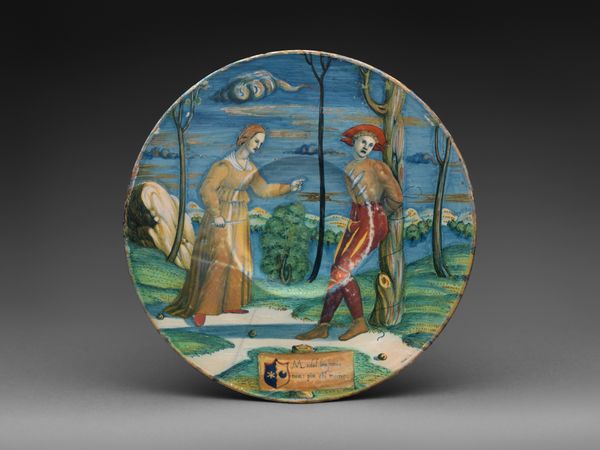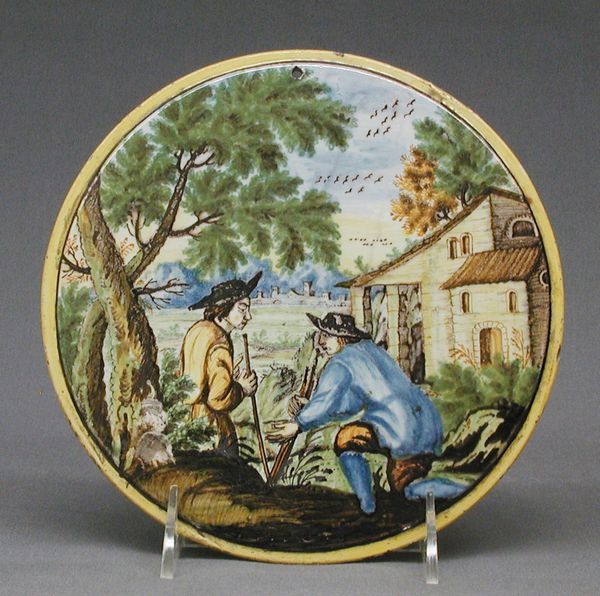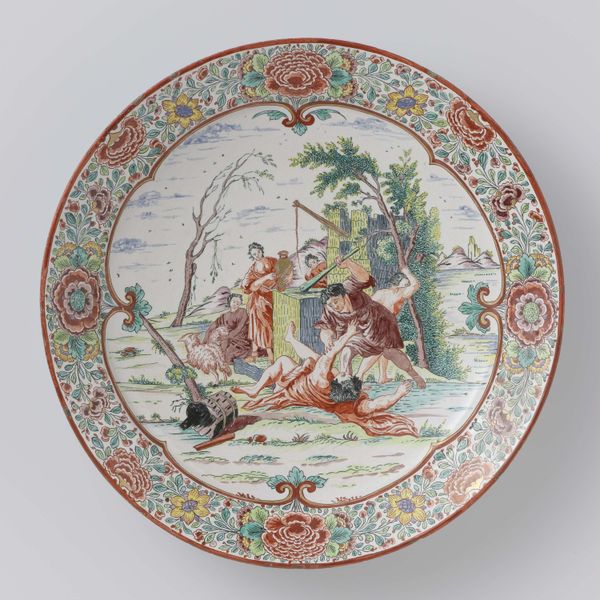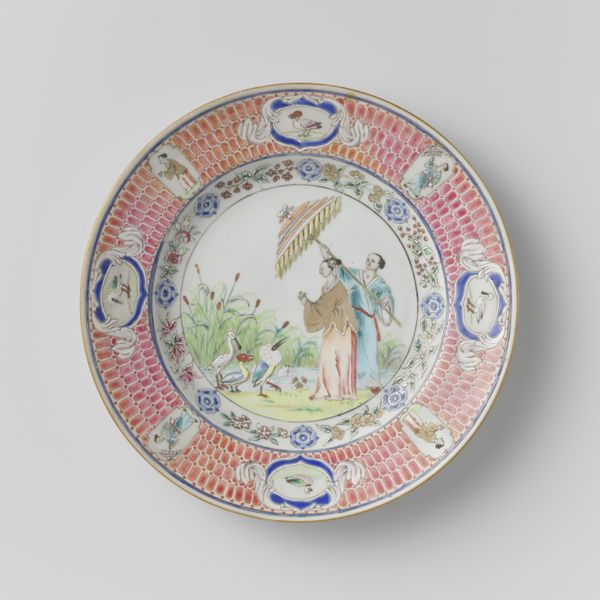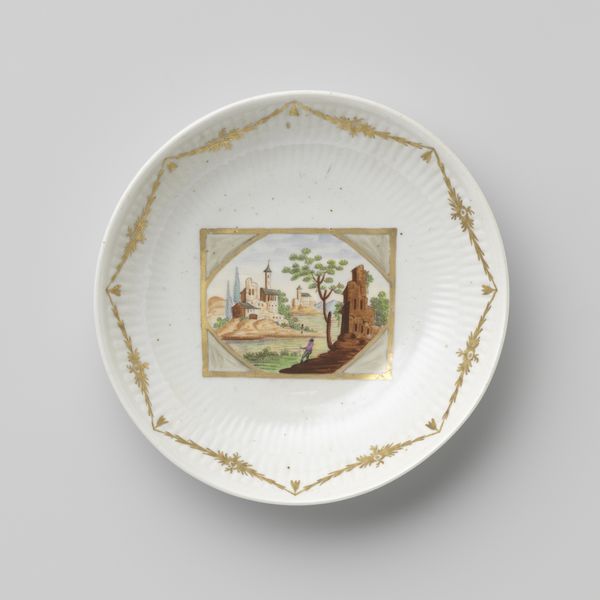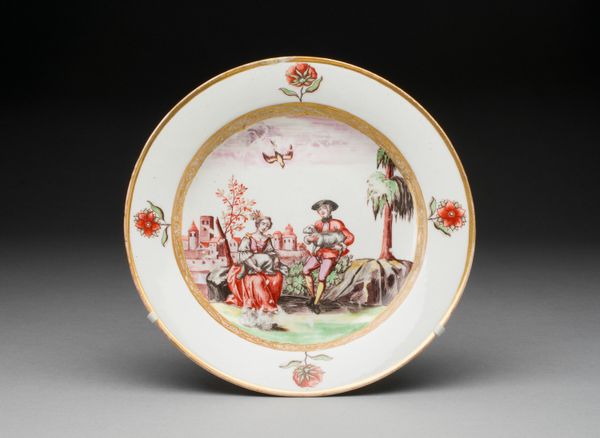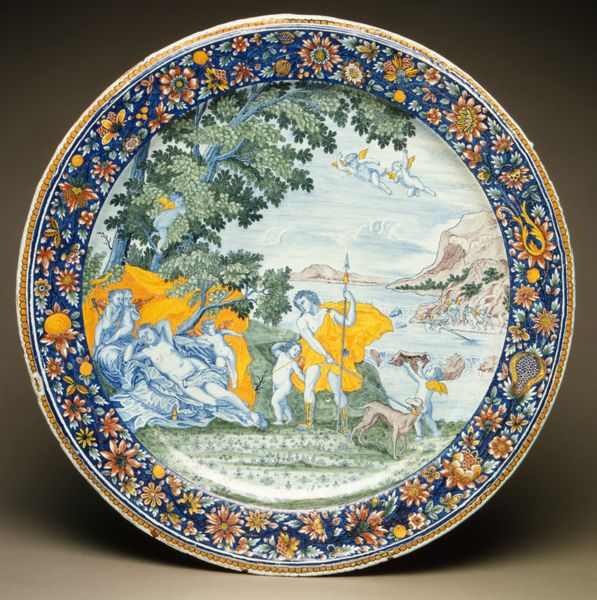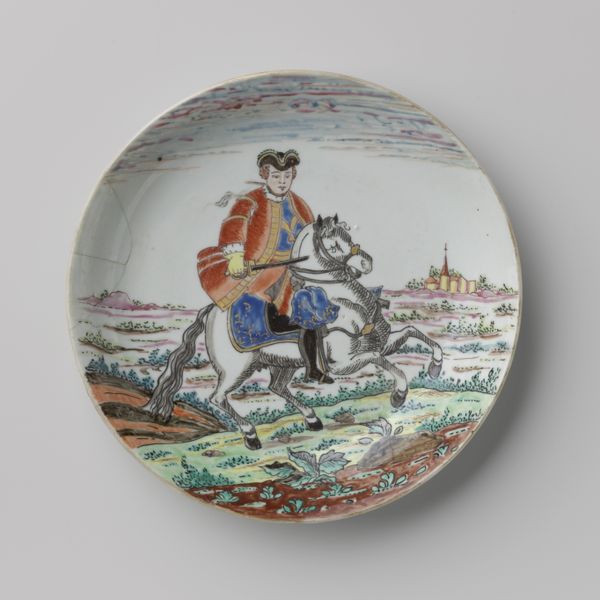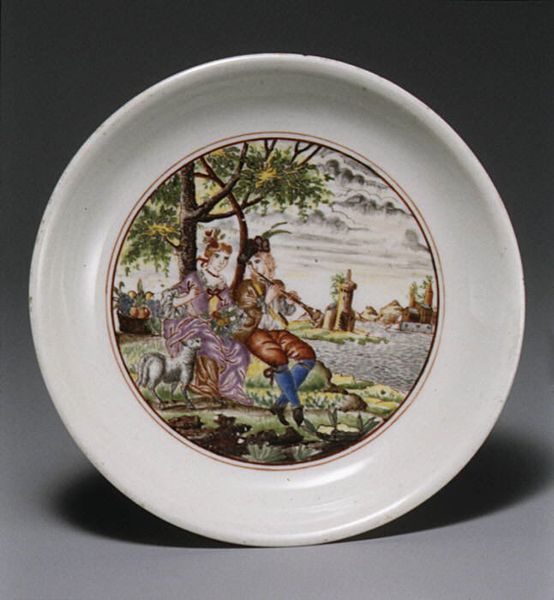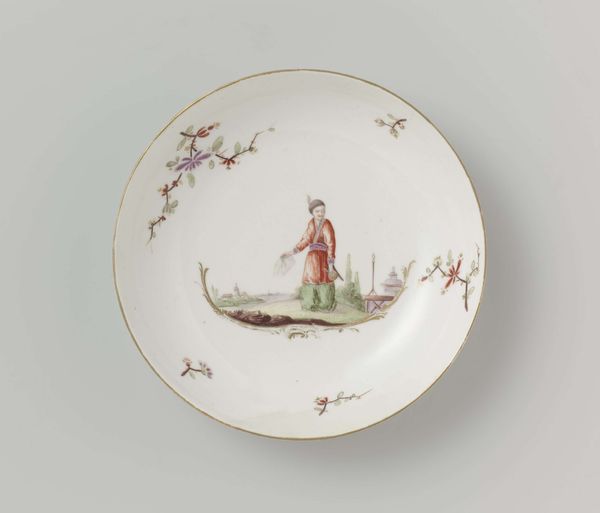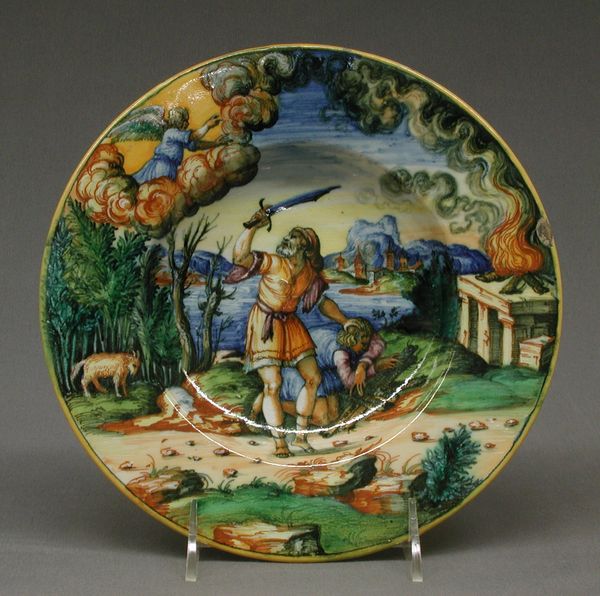
Plate (piatto): The Prodigal Son among the swine 1525
0:00
0:00
ceramic
#
narrative-art
#
ceramic
#
figuration
#
ceramic
#
genre-painting
#
history-painting
#
italian-renaissance
Dimensions: Diameter: 11 1/8 in. (28.3 cm) Mount: 3 in. × 5 9/16 in. × 11 5/8 in. (7.6 × 14.1 × 29.5 cm)
Copyright: Public Domain
Curator: The artwork before us, "The Prodigal Son among the swine," rendered in ceramic around 1525, presents an intimate interpretation of a well-known biblical story. It's currently part of the collection at the Metropolitan Museum of Art. Maestro Giorgio Andreoli's craftsmanship really shines through. Editor: My immediate response is how jarringly mundane the scene is, despite the weighty narrative it conveys. The prodigal son amidst the livestock looks surprisingly... ordinary, like a scene from everyday life rather than a dramatic moral tale. It is a little discomforting, as if destitution looks far too familiar. Curator: That's insightful. It's important to remember that Maestro Giorgio was part of a flourishing ceramic tradition. The production of these kinds of plates, "maiolica," was a complex, laborious process that involved specific clay sourcing, forming, firing, glazing and painting. Editor: Absolutely. And in what ways does Andreoli’s plate contribute to or subvert established social hierarchies and norms of his era? Look at the detail he invests into the animals as compared to the man himself. He looks broken down by something, yes, but consider who had access to theological readings and art! How many people felt sympathy for his character versus recognizing their daily grind? Curator: Indeed, the socio-economic aspect is significant. And notice the reflective luster, almost metallic quality achieved by Maestro Giorgio using metallic salts. He had that special mark. It certainly elevated the ceramic craft from a purely utilitarian function to an art form collected and displayed by the elite. The texture and colors here make the artwork much more engaging. Editor: It’s hard to ignore that for an artist making work inside the Renaissance courts in Italy, religion had much less to do with divine messages and a lot more to do with displays of wealth, political agendas, and philosophical influence, and that comes across here. What does it mean for an image of faith to exist as a piece of luxury? Curator: A point well taken, given the culture of courtly patronage. But, there is this intrinsic story, whether for religious or entertainment reasons, portrayed in front of us. Andreoli’s ceramic craft serves as a unique vessel, doesn’t it, both literally and figuratively, for exploring themes of destitution and, potentially, redemption? Editor: In viewing this object, its usefulness to me exists in highlighting tensions that were and are true today: the friction between belief and material reality, and our ongoing struggle with poverty versus opulence.
Comments
No comments
Be the first to comment and join the conversation on the ultimate creative platform.
